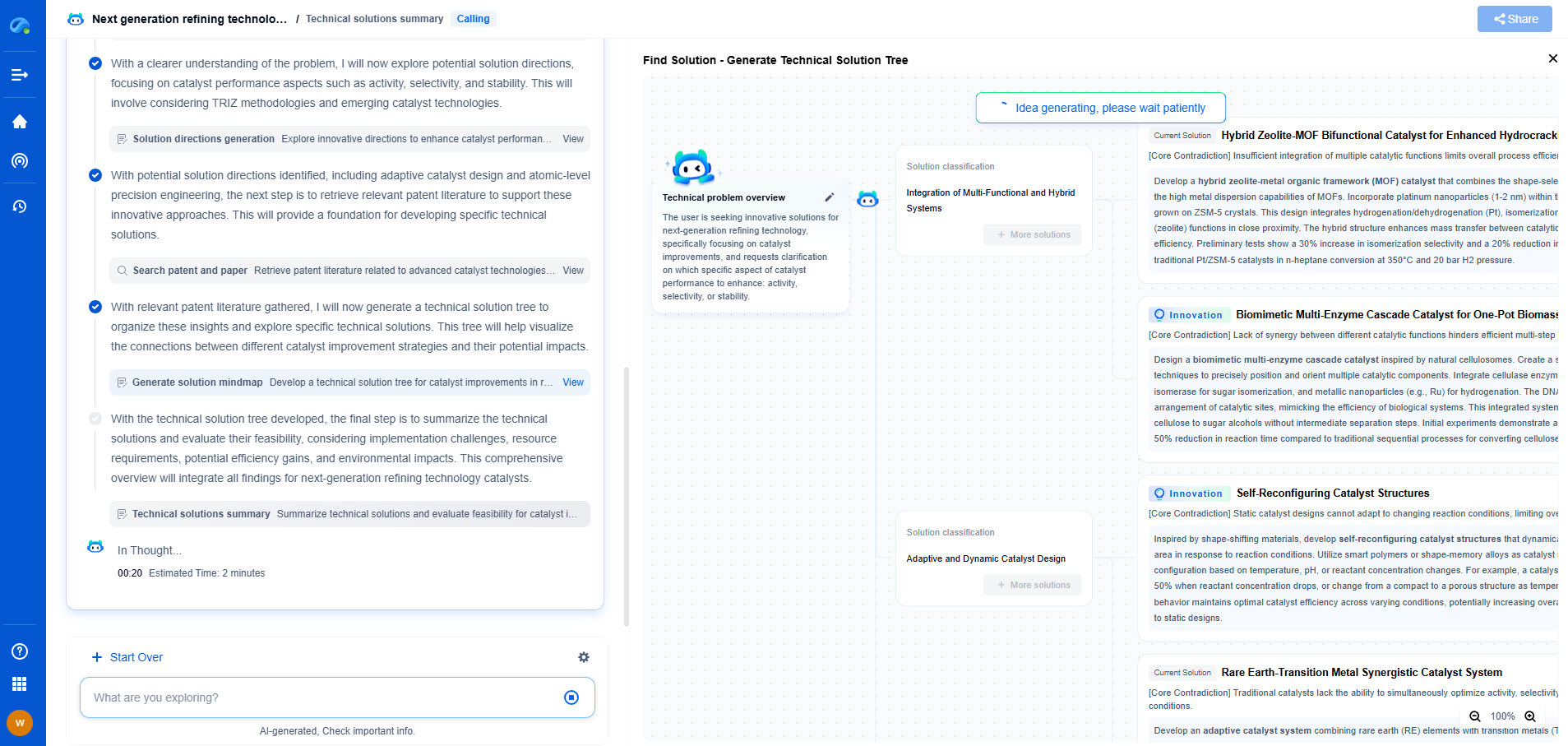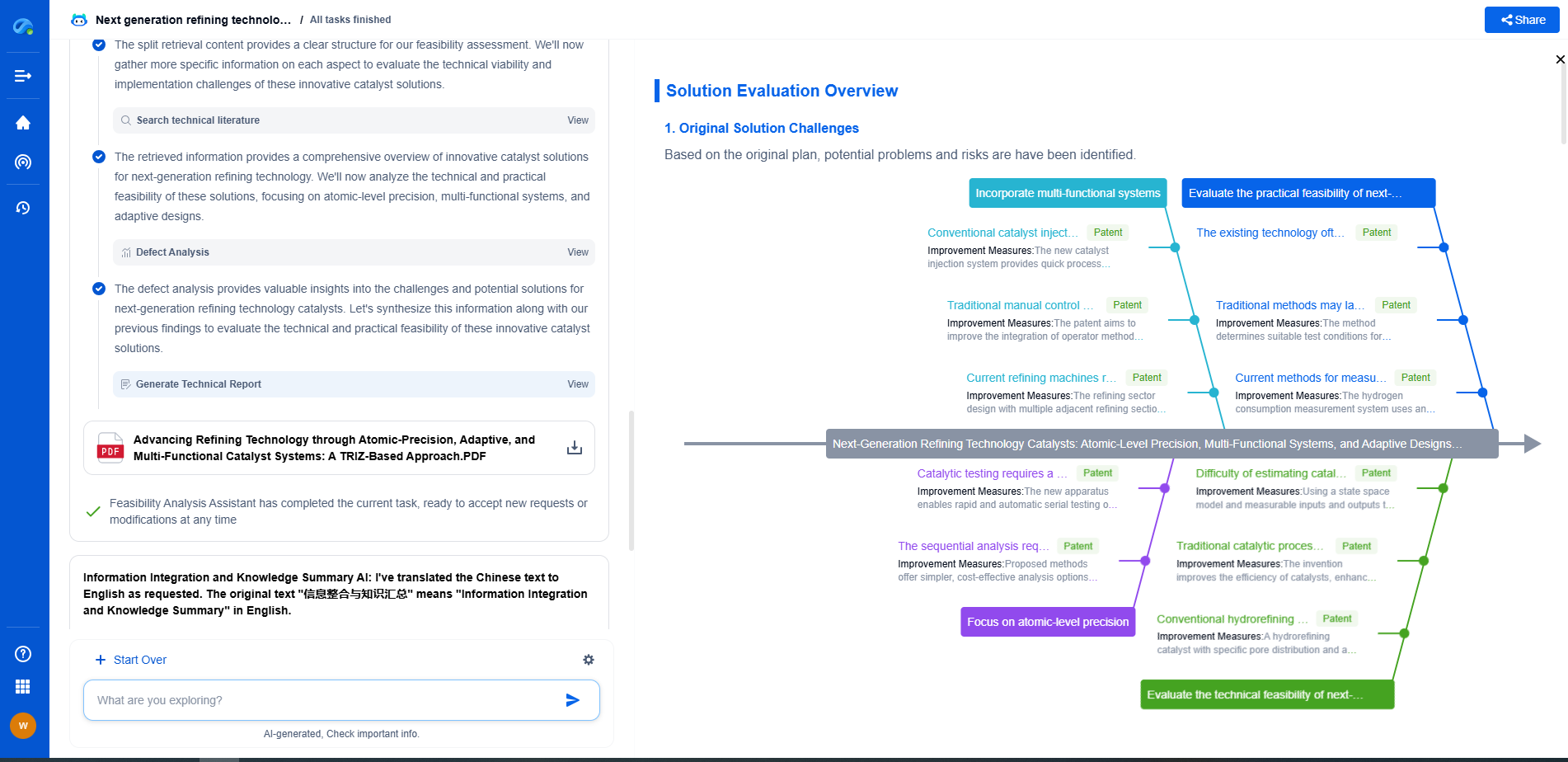How to Implement Edge AI Algorithms in Pressure-Sensitive Wearables
JUL 14, 2025 |
In recent years, the integration of Artificial Intelligence (AI) with wearable devices has opened new avenues for innovation, particularly in the realm of health and fitness monitoring. Edge AI, which involves processing data on the device itself rather than relying on cloud-based systems, offers significant advantages in terms of speed, privacy, and efficiency. Pressure-sensitive wearables, which can measure and respond to pressure changes from the body or environment, stand to benefit immensely from Edge AI algorithms. This piece delves into how these algorithms can be effectively implemented in pressure-sensitive wearables to enhance their functionality and user experience.
Understanding Pressure-Sensitive Wearables
Pressure-sensitive wearables are devices embedded with sensors that can detect and measure pressure changes. These wearables are used in various applications, from fitness trackers and smartwatches to medical monitoring devices. By interpreting pressure data, these devices can offer insights into physical activity, stress levels, and even detect potential health issues. The challenge lies in processing this data efficiently, which is where Edge AI comes into play.
Benefits of Edge AI in Pressure-Sensitive Wearables
Edge AI enables real-time data processing on the wearable itself, reducing the latency associated with cloud-based processing. This immediate processing allows for quick responses to pressure changes, which is crucial in applications like health monitoring where delay can be detrimental. Moreover, processing data locally enhances privacy, as sensitive information doesn’t need to be transmitted over networks. Edge AI also optimizes power consumption, prolonging the battery life of wearables—a critical consideration for user convenience.
Key Considerations for Implementing Edge AI
Before diving into the implementation of Edge AI algorithms, it's important to consider a few key factors. Firstly, the computational capabilities of the wearable must be assessed to ensure it can support AI processing. This often involves selecting the right hardware components, such as microcontrollers or AI chips specifically designed for edge computing. Additionally, the algorithms must be tailored to handle the specific types of pressure data being collected, which may involve custom development or adaptation of existing AI models.
Developing AI Algorithms for Pressure Data
Developing AI algorithms for pressure-sensitive wearables involves several steps. Initially, it is important to gather a comprehensive dataset that reflects the range of pressures and conditions the device will encounter. This data is crucial for training machine learning models to accurately interpret pressure signals. Techniques such as supervised learning can be used to train models to recognize patterns and make predictions based on pressure input. More advanced methods, like deep learning, may also be considered for complex applications, though they require more computational power.
Optimizing Algorithms for Edge Devices
Once an AI model is developed, it must be optimized for edge devices with limited resources. This optimization process can include reducing the model size through techniques like quantization, which involves converting the model to use lower precision variables, thus decreasing its computational load. Pruning, which eliminates unnecessary parts of the model, can also be employed to streamline processing. These steps help ensure the AI runs efficiently on the device, maintaining quick response times and conserving battery life.
Integration and Testing
Integrating AI algorithms into a wearable device requires careful planning and execution. The algorithms must be seamlessly integrated with the wearable's existing software infrastructure to ensure they function correctly with the device's sensors and data processing systems. Rigorous testing is essential to validate the performance and reliability of the AI-enhanced wearable under various conditions. Continuous testing and iteration can help refine the algorithms and their integration, ensuring they meet user expectations and safety standards.
Future Prospects of Edge AI in Wearables
As technology continues to evolve, the potential applications of Edge AI in pressure-sensitive wearables are vast. Future advancements in AI algorithms and edge computing hardware will further enhance the capabilities of these devices, opening up new possibilities in personalized health monitoring, sports training, and even mental health assessment. Developers and researchers must remain vigilant in exploring these opportunities while ensuring ethical considerations around data privacy and security are upheld.
Conclusion
Implementing Edge AI in pressure-sensitive wearables presents a promising frontier in wearable technology. By enabling efficient, real-time data processing on the device, Edge AI significantly enhances the functionality and responsiveness of wearables. Through careful development and integration of AI algorithms, these devices can offer users unprecedented insights and convenience, paving the way for smarter, more intuitive interactions with technology in our daily lives.
From 5G NR to SDN and quantum-safe encryption, the digital communication landscape is evolving faster than ever. For R&D teams and IP professionals, tracking protocol shifts, understanding standards like 3GPP and IEEE 802, and monitoring the global patent race are now mission-critical.
Patsnap Eureka, our intelligent AI assistant built for R&D professionals in high-tech sectors, empowers you with real-time expert-level analysis, technology roadmap exploration, and strategic mapping of core patents—all within a seamless, user-friendly interface.
📡 Experience Patsnap Eureka today and unlock next-gen insights into digital communication infrastructure, before your competitors do.
- R&D
- Intellectual Property
- Life Sciences
- Materials
- Tech Scout
- Unparalleled Data Quality
- Higher Quality Content
- 60% Fewer Hallucinations
Browse by: Latest US Patents, China's latest patents, Technical Efficacy Thesaurus, Application Domain, Technology Topic, Popular Technical Reports.
© 2025 PatSnap. All rights reserved.Legal|Privacy policy|Modern Slavery Act Transparency Statement|Sitemap|About US| Contact US: help@patsnap.com

